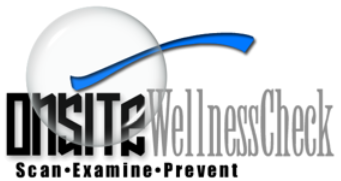Onsite Wellness Check: Preventative Care
Providing targeted wellness solutions - which lead to long term business rewards
What Are The Risk Factors For Osteoporosis?
Being female
Thin and/or small frame
Advanced age
A family history of osteoporosis
Post menopause, including early or surgically induced menopause
Abnormal absence of menstrual periods (amenorrhea)
Anorexia nervosa or bulimia
A diet low in calcium and vitamin D
Use of certain medications, such as corticosteroids and anticonvulsants
Low testosterone levels in men; men over age 50 years
An inactive lifestyle
Cigarette smoking
Excessive use of alcohol and carbonated cola beverages
Your body loses bone and replaces it with new bone throughout your ENTIRE life. As you age, your body tends to lose bone faster than it replaces it. It too much bone is lost, osteopenia and then osteoporosis can develop. Bones become fragile and more likely to break. There are NO symptoms – osteoporosis is PAINLESS. Women after menopause are especially at risk. Now men over 50 years of age are encouraged to have a base line DXA bone scan performed as well.
• 8 million American women and 2 million men have osteoporosis! Millions more have osteopenia. Most have not talked to their physician about it.
• 1 in 2 women and 1 in 8 men over age 50 will have an osteoporosis related fracture. 10-20% of people with a hip fracture die within 6 months, 50% are unable to walk without assistance, 25% will require long-term care.
• Osteoporosis can strike at any age, adolescent to elderly, men and women.
• Osteoporosis is responsible for more than 1.5 million fractures annually at a cost of $17 billion annually. Each hip fracture represents an estimated $40,000 in total medical costs.
• A Bone Mineral Density (BMD) assessment is a highly effective and accurate method of diagnosing osteoporosis.
• Non-prescription options may also be effective – Calcium and Vitamin D, proper nutrition, decreased consumption of alcohol and carbonated cola beverages, weight-bearing exercise and other lifestyle changes may help prevent or treat osteoporosis.
The positive impact of early diagnosis on the effective treatment of osteoporosis is well documented.
By assessing your bone mineral density (BMD), your doctor can accurately determine if you are at risk of osteoporosis and recommend the proper treatment.
DexaCare densitometers are advanced new imaging systems that perform a fast, precise and accurate bone density analysis. It takes three minutes, you remain fully clothed, and DexaCare performs a painless, very low dosage, X-ray scan of your forearm. Its computer also monitors the rate of bone loss over time and gauges your response to therapy for follow-up.
Osteoporosis is not curable – it is preventable and can be successfully treated if it is diagnosed early.
- Fewer high risk factors
- Improved morale
- Lower health care premiums
- Enriched company culture
- Reduced absenteeism
- Increased productivity
Click Here to schedule your event!
